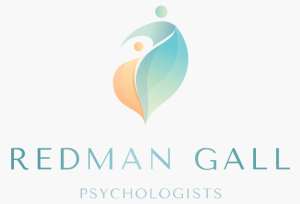Autism Spectrum Disorder (ASD) and Attention-Deficit/Hyperactivity Disorder (ADHD) are two of the most commonly diagnosed neurodevelopmental disorders in children. While they are distinct conditions, ASD and ADHD share overlapping features that can sometimes lead to confusion in diagnosis. This article explores the similarities and differences between ASD and ADHD, helping to clarify their unique characteristics and areas of overlap.
Similarities Between ASD and ADHD
1. Neurodevelopmental Origin: Both ASD and ADHD are neurodevelopmental disorders, affecting brain development and function from an early age.
2. Executive Functioning Challenges: Individuals with both conditions often struggle with executive functions, including planning, organizing, and time management.
3. Social Difficulties: While manifesting differently, both disorders can lead to challenges in social interactions and relationships.
4. Sensory Processing Issues: Sensory sensitivities or seeking behaviors can be present in both ASD and ADHD.
5. Attention Problems: Difficulty maintaining focus is common in ADHD and can also be present in ASD.
6. Genetic Factors: Both disorders have a strong genetic component and tend to run in families.
7. Co-occurrence: It’s not uncommon for individuals to be diagnosed with both ASD and ADHD.
Differences Between ASD and ADHD
1. Core Symptoms:
•ASD: Characterized by difficulties in social communication, restricted interests, and repetitive behaviors.
•ADHD: Primarily involves issues with attention, hyperactivity, and impulsivity.
2. Social Interaction:
•ASD: Individuals may have difficulties understanding social cues, maintaining conversations, and developing age-appropriate peer relationships.
•ADHD: Social struggles often stem from impulsivity or inattention, but understanding of social norms is generally intact.
3. Communication:
•ASD: Often involves delayed language development, literal interpretation of language, and difficulty with non-verbal communication.
•ADHD: Typically, there are no inherent language delays, but there may be trouble listening or staying on topic in conversations.
4. Interests and Behaviours:
•ASD: Restricted, intense interests and repetitive behaviours or routines are common.
•ADHD: Interests are more varied, but individuals may hyperfocus on preferred activities.
5. Cognitive Profile:
•ASD: Often shows uneven cognitive abilities, with strengths in some areas and challenges in others.
•ADHD: Challenges are primarily in attention and executive function, with a more consistent cognitive profile.
6. Sensory Processing:
•ASD: Significant sensory sensitivities or seeking behaviors across multiple senses are common.
•ADHD: Sensory issues may be present but are typically less pronounced than in ASD.
7. Motor Skills:
•ASD: May involve motor skill delays or unusual motor movements.
•ADHD: Often associated with hyperactivity and fidgeting, but not typically with motor skill delays.
8. Age of Onset and Diagnosis:
•ASD: Symptoms typically evident from early childhood, often diagnosed by age 4.
•ADHD: Symptoms are present from childhood, but diagnosis often occurs during school age when attention demands increase.
Conclusion
While ASD and ADHD share some common features, they are distinct disorders with unique core symptoms and presentations. Understanding these similarities and differences is crucial for accurate diagnosis and effective intervention. It’s important to note that these disorders can co-occur, and some individuals may display features of both. A comprehensive evaluation by a qualified professional is essential for accurate diagnosis and appropriate treatment planning.
At Redman Gall Psychologists, we routinely work with individuals with ASD, ADHD, or both, to improve their functioning and well-being. As our understanding of neurodevelopmental disorders continues to evolve, ongoing research is shedding more light on the complex relationship between ASD and ADHD, potentially leading to more nuanced diagnostic criteria and targeted interventions in the future.



